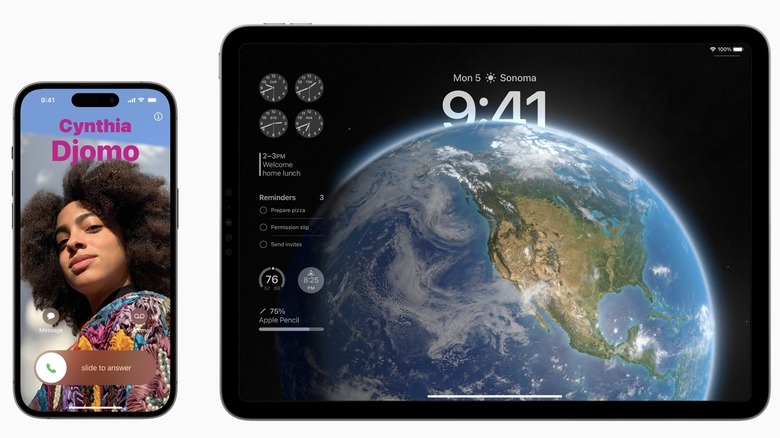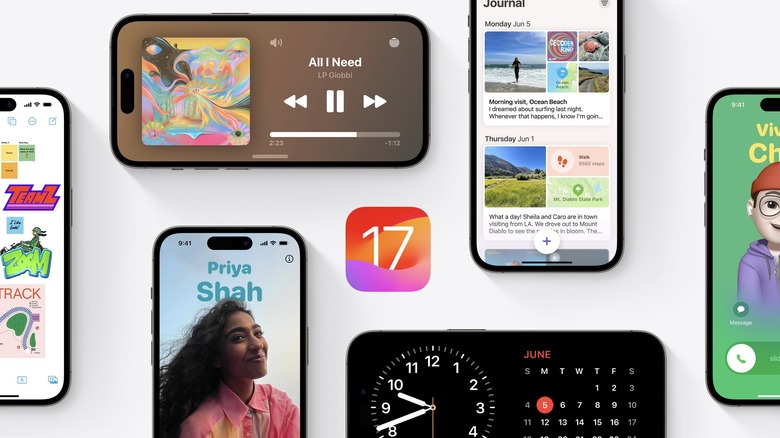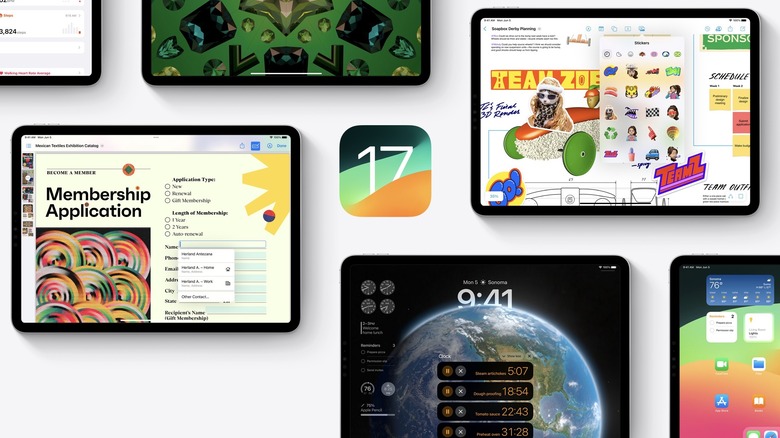iOS 17 & iPadOS 17: Which iPhone & iPad Models Will Be Compatible?
At WWDC 2023, Apple announced iOS 17 and iPadOS 17, the upcoming versions of its iPhone and iPad operating systems. iPhone users can look forward to big updates to the Phone app, including customizable Contact Posters and Live Voicemail with real-time transcription.
Apple is also making some changes to AirDrop, letting users bring two iPhones close together to exchange contact information with NameDrop, share content like photos and videos, or start a SharePlay session. A new "StandBy" mode turns the iPhone into a smart display while charging, alongside a new a Journal app for self-reflection and wellness.
As for iPad users, iPadOS brings a customizable lock screen, similar to what Apple introduced with iOS 16. Apple has also brought the Health app to iPad, alongside interactive widgets and enhanced PDF editing tools like Autofill and annotation.
Other common features coming to both iOS 17 and iPadOS 17 include FaceTime audio and video messages, Check In, Live Stickers in the Messages app, improved autocorrect, and profiles in Safari. While Apple offers unrivaled software support for its products, every year, it inevitably drops a few devices from its annual updates. These are all the iPhones and iPads that will receive iOS 17 and iPadOS 17 this year.
All the iPhones compatible with iOS 17
With iOS 17, Apple has dropped three iPhones from its annual update cycle. This includes the iPhone 8, iPhone 8 Plus, and iPhone X. All three iPhones were announced in September of 2017, running iOS 11, and received an additional five updates until the release of iOS 16. While these iPhones will continue to receive the remaining iOS 16 updates, support will end this fall when Apple releases iOS 17 for mobile devices.
As for the supported iPhones, the list includes all of the iPhone X family, the entire iPhone 11, iPhone 12, and iPhone 13 lineup — as well as the newest iPhone 14 lineup. Additionally, second and third-generation iPhone SE models will also be compatible with iOS 17. Each of these models will receive the iOS 17 update:
- iPhone XR
- iPhone XS
- iPhone XS Max
- iPhone 11
- iPhone 11 Pro
- iPhone 11 Pro Max
- iPhone 12
- iPhone 12 mini
- iPhone 12 Pro
- iPhone 12 Pro Max
- iPhone 13
- iPhone 13 mini
- iPhone 13 Pro
- iPhone 13 Pro Max
- iPhone 14
- iPhone 14 Plus
- iPhone 14 Pro
- iPhone 14 Pro Max
- iPhone SE (second generation and above)
The oldest iPhones to receive the iOS 17 update are the iPhone XR, iPhone XS, and iPhone XS Max, all of which were announced in 2018. Given that this is the fifth major update for these iPhones, Apple might not upgrade them to iOS 18 in 2024.
All the iPads compatible with iPadOS 17
With the release of iPadOS 17, Apple is dropping support for two iPad models. This includes the first-generation iPad Pro that was released in 2015, and the fifth-generation iPad that was launched in 2017. The first-generation iPad Pro received seven years of iPadOS updates, which is impressive even for Apple. In comparison, the fifth-generation iPad received only five years of updates.
The iPads that will get iPadOS 17 include the iPad Pro (second generation and later), iPad Air (third generation and later), iPad (sixth generation and later), and iPad mini (fifth generation and later). Given that iPad models can be harder to identify than iPhones, you can find the model number by checking the back of the iPad.
Alternatively, open the Settings app on iPad, tap "About," and look for the model number at the top. Once you've identified the model number, you can cross-reference it on Apple's support website to confirm that it's eligible for the iPadOS 17 update.


